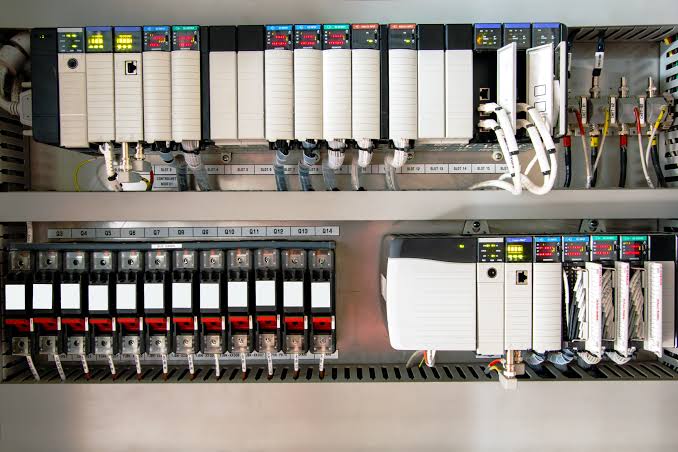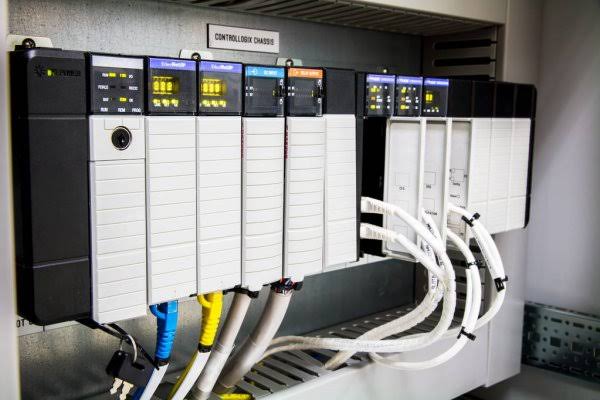Hello, everyone! Today, we are going to discuss a crucial topic – PLC analog input and output configuration (PLC Signals ). PLC, which stands for Programmable Logic Controller, is an electronic device that assists in controlling our industrial automation systems. In this blog post, we will provide you with information about intermediate-level analog input and output configuration in PLC. So, let’s get started!
PLC Signals (PLC Analog Input and Output): A Basic Introduction
Firstly, we need to understand what analog input and output are. You’ve probably heard of digital input and output, such as the on/off state of a switch or an LED. However, plc analog input and output are a bit different.
In analog input, we monitor a continuous range of values. For example, a temperature sensor measures different temperatures continuously. This means that analog input signals come in a range of values rather than a specific one.
In analog output, we generate values within a range. For instance, when controlling the speed of a motor. Here, the PLC generates analog output signals to vary the motor’s speed.
Now, we will understand plc analog input and output configuration.

PLC Analog Input Configuration
Now that we’ve clarified what analog input and output are, let’s look at how to configure PLC analog input.
- Connect Analog Sensors: First and foremost, you need to connect your analog sensors to the PLC. These sensors generate analog signals in the form of voltage or current. PLCs typically come with analog input cards that you can use to connect these sensors.
- Set Scaling Parameters: Each sensor has a different measurement range. So, you’ll need to set scaling parameters in the PLC to ensure it interprets the analog signals correctly. Scaling parameters define the minimum and maximum values to help the PLC interpret input values correctly.
- Signal Conditioning: Some sensors produce noisy output signals, so you must consider signal conditioning. Signal conditioning reduces signal noise, ensuring the PLC can make accurate measurements.
- Data Logging: If you want to log data, you’ll need to allocate memory in the PLC to store analog input values. This allows you to analyze the data later.
- Control Algorithms: Analog input values are also used in control algorithms. For example, in a temperature control system, you can use analog input values to maintain the desired temperature.

PLC Analog Output Configuration
Now, let’s discuss PLC analog output configuration.
- Connect Output Modules: To generate analog output signals in a PLC, you’ll need to use analog output modules. These modules produce output signals in the form of voltage or current.
- Set Scaling Parameters: Just like in analog input configuration, you’ll need to set scaling parameters for analog output to ensure the PLC generates analog signals accurately. Scaling parameters define the minimum and maximum values.
- Define Control Logic: To generate analog output signals, you must define control logic. This logic determines how output signals should change based on input values.
- Safety Considerations: Safety is crucial in analog output configuration. If you’re controlling a critical process, incorporate safety features to protect against unwanted situations.
Use of PLC Analog Input and Output Configuration
Now that we understand the basics of PLC analog input and output configuration, you might be wondering how it’s used.
PLC analog input and output configuration is commonly employed in manufacturing units, chemical plants, and other industries where continuous monitoring and control are essential. In such industries, analog sensors and output devices are widely used.
- Temperature Control: A common example is temperature control. Maintaining temperature is crucial in manufacturing units. Analog temperature sensors are connected to PLC analog input ports, which then control cooling systems and heaters via analog output ports.
- Pressure Monitoring: Chemical plants use PLC analog input configuration for pressure monitoring. Pressure sensors are connected to analog input ports, and the PLC interprets the signals to take safety measures and control actions.
- Motor Speed Control: PLC analog output configuration is used for motor speed control. In manufacturing units, PLCs generate analog output signals to control motor speeds.
- Liquid Level Control: Monitoring and controlling liquid levels is another common application. In industries where liquids are used, monitoring and controlling liquid levels are essential.
- Quality Control: PLC analog input configuration is used to maintain product quality in industries. Sensors measure product parameters, and the PLC takes control actions based on these measurements.
Conclusion
In conclusion, this blog post has provided an overview of PLC analog input and output configuration and how it is used at the intermediate level in industrial applications. Knowledge of PLC analog configuration is crucial if you work in the field of industrial automation or aspire to pursue a career in this field.
PLC technology is continuously evolving, and in the future, we can expect even more new techniques and features. Therefore, it’s essential to stay updated and follow the latest trends and technologies.
We hope that this blog post has been informative for you, and you now have a better understanding of PLC analog input and output configuration.
Our You Tube Channel Our Face Book Page Home Page
Can I get pdf copy from this PLC ?
hi!,I like your writing very a lot! share we keep up
a correspondence extra approximately your post
on AOL? I need an expert in this house to resolve my problem.
Maybe that’s you! Looking ahead to see you.
I for all time emailed this web site post page to all my contacts, as if like to
read it afterward my friends will too.